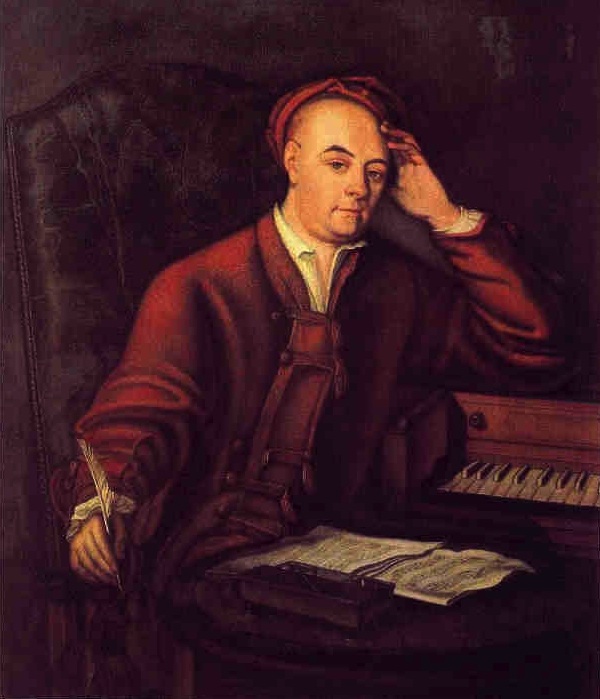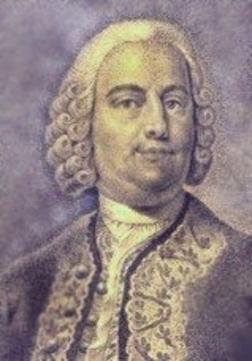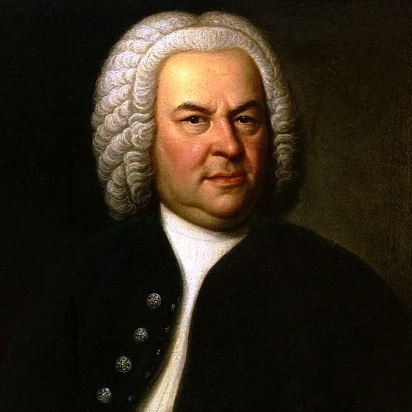Archetti’s co-director John Dornenburg discusses the music on their upcoming SFEMS concert, the weekend of October 23–25.

Handel’s Concerti Grossi Opus 3 were published by John Walsh in 1734, a date that rather pointedly corresponds to the expiration of Handel’s 1720 royal privilege for music printing. This was a time of widespread piracy in the music publishing business, and it appears that Walsh may have assembled the six concertos of Opus 3 from a variety of Handel’s earlier works—quite possibly without Handel’s oversight or approval. The title page for Opus 3 claims that the scoring is identical to that of Corelli’s revered Concerti Grossi Opus 6, but the compositions in Opus 3 have little to do with Corelli’s collection in either form or instrumentation. Walsh’s edition also contains a number of notational errors and even a missing measure in the last movement of Opus 3/3, providing a possible indication of his rush to publish a set of concertos by London’s leading composer. In spite of all this, there is plenty of fine music in these concertos, which are drawn from both vocal and instrumental models. The opening Largo and Allegro of Opus 3/3 are derived from the anthem “My song shall be always,” HWV 252, the Adagio is found in the chorus “We believe that Thou shalt come” from the Chandos Te Deum, HWV 281, and the final Allegro is based on the organ Fugue in G Major, HWV 606.
J.S. Bach did not have the problem of publication piracy that Handel dealt with in London, and in fact none of Bach’s concertos were published during his lifetime (unless one counts the Italian Concerto for solo harpsichord). Autograph parts have survived for the violin Double Concerto, but while these parts are now known to date from his time in Leipzig, the original date of composition cannot be fixed with any certainty. While Bach adopted the general ritornello structures of Vivaldi, he consistently unifies and enriches his own and other composers’ works with thematic, harmonic, and contrapuntal detail. The opening ritornello of the Concerto for Two Violins contains five full statements of the main theme in a fugal exposition before the soloists enter with a new melody. The soloists subsequently repeat this new theme two more times in later entries, giving it the feeling of a secondary ritornello theme. The orchestra accompanies the soloists with fragments of the main ritornello theme, some long pedal points, and a vigorous three-note figure that will become a predominant feature of the third movement. In the Largo the texture changes to a trio, with the orchestra re-enforcing the harmonies in a gently lilting siciliana. This gentleness belies the powerful effect this music can have on the listener, who will be led through a series of subtle emotional states that Rudolf Steglich, writing in 1935, called “a perspective on the vital stillness at the heart of existence.”* The final Allegro increases the rhythmic tension considerably, with very close imitation between the solo violins. They are accompanied by an energetic three-note figure across all the orchestral parts, which is derived both from the new ritornello theme and a borrowing from the first movement. This kind of remarkable thematic consistency in Bach’s music plays a major role in its appeal to generations of music lovers.

The surprise figure on our concert program, Giuseppe Brescianello, was born in Bologna, but spent most of his professional life in Stuttgart, Germany, where he served as court Kapellmeister. His relatively modest number of surviving works includes one opera, but he seems to have concentrated mostly on instrumental music. His sole publication was a set of 12 Concerti e Sinfonie in 1738, but the Concerto for Oboe and Violin presented here is not included in that collection and has remained in obscurity until its modern publication in 1995. The opening movement owes much to the ritornello form and melodic style of Vivaldi, with a multi-themed ritornello section and clear solo departures. The middle movement Grave is noteworthy for its many surprising harmonic turns and for the juxtaposition of the soloists’ ornamented melodies against rather unrelenting dotted notes in the accompaniment. The final Allegro once again leads with a multi-themed ritornello, followed by contrasting melodic episodes from the solo instruments. One striking feature of this movement is a 25-measure written-out cadenza towards the end, originally written for the violin, but which we have elected to perform on the oboe.
Bach’s seven concertos for solo harpsichord, BWV 1052–8, survive in a single autograph manuscript, along with a fragment of an eighth, BWV 1059. All seven concertos are transcriptions of earlier works for solo melody instruments, and in each case they are transposed down a tone from the original key. The Harpsichord Concerto in D Major is derived directly from the Violin Concerto in E major, but when Bach transcribed it he made significant changes, including removing the string bass from many of the solo sections and rewriting the upper string parts in light of his newly modified solo part. The first movement follows the design and key scheme of the da capo aria. The actual da capo moment is preceded by a two-measure Adagio for the harpsichord where one might imagine a vocalist’s cadenza. The central Adagio is based upon an ostinato-like bass pattern, which both underpins the meditative solo and provides the main motives for the accompanying upper strings. The final Allegro is in the form of a French rondeau, with the ritornello theme returning between each solo episode with a full statement and in the original key. The symmetry of Bach’s design is unusually clear: the rondeau theme of 16 bars is matched in length by the 16 bars of two solo episodes. The final solo episode is doubled in length (and difficulty) to 32 bars. It is often surmised that the virtuosity required in the harpsichord concertos might give us some insight into how J.S. Bach himself might have reworked and embellished pieces in his own performances.
While we have seen that Handel’s Opus 3 concerti grossi were really a mixed collection of pieces cobbled together by the London publisher Walsh, the Twelve Grand Concertos of 1739 reveal the composer’s true mastery of the genre. In October of that year his second Privilege of Copyright was issued, and it was first used to protect these amazing works from the rampant musical pilfering of the time. Their designation as Opus 6 truly links them to Corelli’s popular Opus 6 concertos (Roger North’s “bread of life”), and all follow Corelli’s scoring for a solo trio of two violins with basso continuo and a four-part string ripieno (reinforcing) group. Handel also employs Corelli’s flexible multi-movement plan, but with the addition of a higher level of virtuosity in the solo parts and more dialogue between the soloists and orchestra—plus his characteristic wit and theatricality. Sometimes, as in the final Allegro of Opus 6/5, he even abandons the basic concerto principle of contrast between soloists and ripieni and opts for a straight four-part texture. Handel composed the entire set of twelve concertos in just one month, often completing a new one in only two days—a remarkable display of artistic enterprise even by baroque standards.

The Concerto for Oboe and Violin, BWV 1060R, is actually a modern reconstruction of a presumed lost original concerto. It is derived from Bach’s Concerto for Two Harpsichords in C Minor, BWV 1060, based on the premise that the top melodic figuration and the piece’s key seem ideally suited to the baroque oboe. Here again Bach’s integration of the main ritornello themes into the solo and accompanying parts creates a cohesive structure that has made this piece a modern concert hall favorite. The central Adagio is similar in texture to the slow movement of the Double Violin Concerto, in that we find the string ripienists providing gentle harmonic support to the long melodic lines of the two solo instruments, this time in pizzicato. The final movement provides another example of Bach’s amazing economy of musical ideas. The opening ritornello’s multiple themes are nearly always present throughout the movement, in both the solo and tutti parts, in manner not unlike the thematic treatment in Brandenburg Concerto No. 2.
*quoted in Martin Geck, Johann Sebastian Bach Life and Work, Harcourt Inc., 2000.












